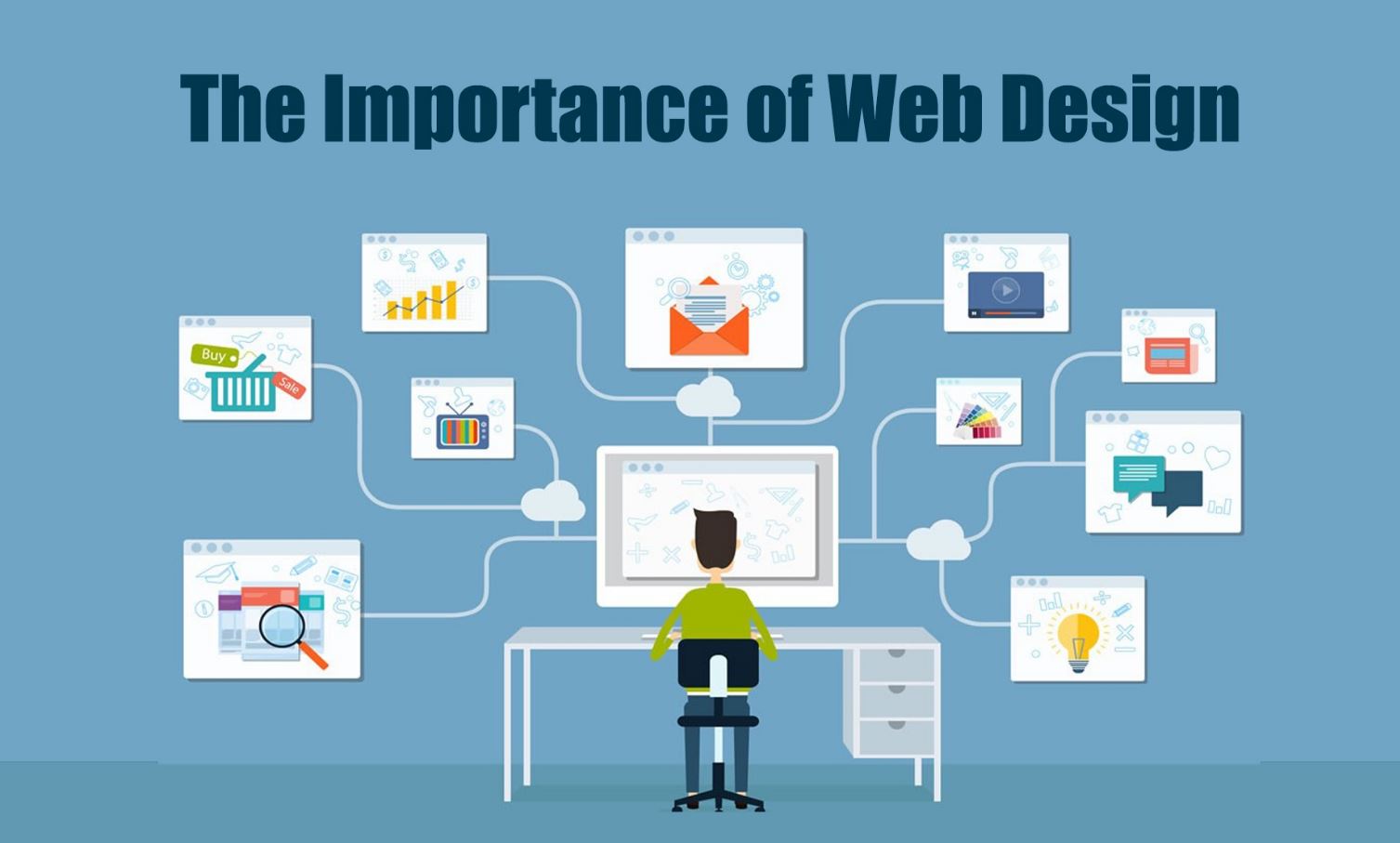How Web Design Affects User Engagement and Conversion Rates
How Web Design Affects User Engagement and Conversion Rates
Blog Article
How Efficient Internet Layout Can Increase Individual Experience and Conversions
In the progressively affordable electronic landscape, effective internet design plays a pivotal role in boosting individual experience and driving conversions. As we check out the essential aspects that contribute to successful internet layout, it comes to be obvious that the influence on customer fulfillment and conversion prices is profound.
Value of User-Centric Style
In the world of web design, prioritizing user-centric style is extremely important for developing efficient digital experiences. This approach concentrates on recognizing the demands, preferences, and actions of users, making certain that electronic user interfaces are intuitive and accessible (Web design). By integrating individual comments right into the layout process, web designers can craft experiences that resonate with their target market, inevitably causing enhanced interaction and satisfaction
User-centric layout highlights use, which is important for decreasing and maintaining individuals bounce prices. When individuals can navigate a web site effortlessly, they are more likely to discover its content and transform right into clients.

Key Components of Efficient Format
Reliable format acts as the backbone of user-centric web design, converting customer needs into aesthetic frameworks that help with interaction. An efficient format prioritizes content with a clear pecking order, directing customers' eyes to important information first. This power structure is usually established making use of color, dimension, and spacing, guaranteeing that critical components stand out.
Another key aspect is using whitespace, which prevents overcrowding and enhances readability. Web design. Whitespace permits elements to breathe, making the general style appear cleaner and simpler to navigate. In addition, uniformity in style elements, such as colors and fonts, cultivates familiarity and trust, allowing customers to browse the website with better convenience
Grid systems can additionally be vital, providing a structure that straightens web content realistically and cosmetically. This placement enhances the customer experience by developing a structured aesthetic flow. Flexibility in design-- like receptive design-- makes certain that sites execute well across numerous devices, providing to diverse individual choices.
Eventually, a reliable format not only captivates customers but additionally motivates them to engage even more deeply, inevitably satisfying and driving conversions organization goals. By concentrating on these crucial elements, designers can produce layouts that reverberate with customers and enhance their overall experience.
Navigational Finest Practices
Instinctive and clear navigating is important for boosting user experience on a site. A well-structured navigation system enables individuals to locate details quickly, which directly affects their satisfaction and chance of conversion - Web design. Executing a hierarchical structure is necessary; use groups and subcategories that logically group relevant material, making it easier for site visitors to check out
Guarantee that links, buttons, and menus keep uniformity in style, color, and placement across all pages, giving individuals with a familiar framework as they navigate. Rather of generic terms, decide for clear labels that properly mirror the material, aiding customers in making notified choices.

Mobile Responsiveness and Ease Of Access

Accessibility, on the various other hand, concentrates on making internet sites functional for people with impairments. This consists of sticking to guidelines such as the Web Web Content Availability Guidelines (WCAG), which deal with problems like shade comparison, text dimension, and key-board navigating. By carrying out these requirements, internet developers can create inclusive experiences that deal with a wider target market, thereby boosting user involvement and fulfillment.
In addition, mobile responsiveness and accessibility not only enhance customer experience however also favorably influence internet search go now engine rankings. Online search engine focus on accessible and mobile-friendly sites, making them much more likely to appear in pertinent search engine result. Consequently, buying these facets of website design not just satisfies user requirements however also adds to overall service success via boosted exposure and boosted conversion prices.
Gauging Success With Analytics
Tracking user communications and habits with analytics is essential for evaluating the success of an internet site. By leveraging tools such as Google Analytics, businesses can collect critical information that exposes just how users involve with their website. Metrics such as bounce prices, typical session period, and conversion prices give understandings right into individual habits and can highlight locations for renovation.
Recognizing individual demographics and web traffic sources additionally improves a web site's efficiency. This information allows web developers to tailor content and layout elements to much better satisfy the needs of their target market. In addition, tracking details individual journeys aids determine potential bottlenecks in the conversion channel, allowing companies to maximize their website design appropriately.
Regularly reviewing this analytics information is important for continual enhancement. A/B screening different style elements can supply concrete evidence of what resonates with customers, allowing for educated decisions based on real-world efficiency. Ultimately, gauging success pop over here through analytics not just enhances individual experience yet also drives conversions, making certain that web layout efforts line up with business goals. In an electronic landscape where competition is strong, taking advantage of the power of analytics is key to keeping a successful and straightforward website.
Final Thought
Finally, efficient website design plays a critical role in improving customer experience and driving conversions. By focusing on user-centric concepts, applying vital layout elements, and ensuring intuitive navigation, sites can engage a diverse target market. Mobile responsiveness and accessibility additional add to a smooth interaction for all individuals. Eventually, measuring success via analytics enables for constant renovation, guaranteeing that design techniques remain aligned with customer requirements, consequently promoting company growth and success.
In the significantly competitive electronic landscape, effective web Learn More layout plays a critical duty in enhancing user experience and driving conversions. By incorporating user comments right into the layout process, internet developers can craft experiences that resonate with their target audience, inevitably leading to raised engagement and fulfillment.
Ultimately, the relevance of user-centric style lies in its capability to develop meaningful communications that drive conversions and foster long-term connections with users, making it a crucial element of effective web style strategies.
Eventually, measuring success with analytics not only boosts individual experience but likewise drives conversions, guaranteeing that web layout initiatives line up with service objectives.In conclusion, effective internet design plays a pivotal function in boosting customer experience and driving conversions.
Report this page